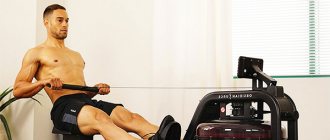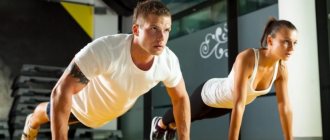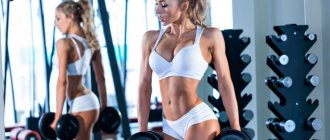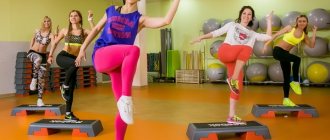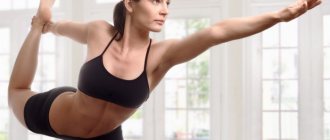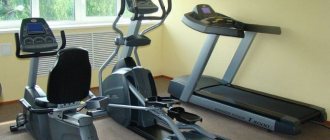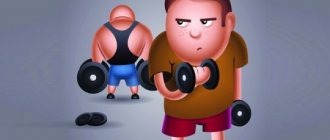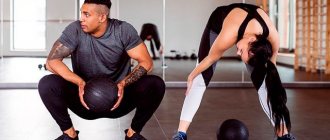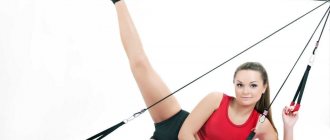American College of Sports Medicine
(American College of Sports Medicine) considers rowing machines "the best equipment in the gym" that allows you to "train all important muscle groups with a smooth and controlled movement." Men's Health magazine says that "rowing machines provide the best full-body workout of any cardio machine because they work both the lower and upper body, leading to enhanced results." Even NASA astronauts use rowing machines because of their effectiveness.
Below are the top 10 benefits of rowing:
Improvement of the cardiovascular system
Like other cardio exercises, rowing forces the heart to pump blood through muscle mass, providing it with energy (oxygen), nutrients, and removing waste products (carbon dioxide and lactic acid). However, rowing has a much greater impact on the described processes, which makes training more effective. The fact is that rowing machines use more muscles.
(according to various sources from 80% to 95%) than on other cardio equipment. More muscles require more energy, which means more blood circulation and heart function. Dr. Levine's work with NASA demonstrates that 30 minutes of rowing can be as effective as 90 minutes of cycling.
In addition, given that the human body is amazingly efficient at adapting to different loads, it is simply useful to vary the load for training. Get off the treadmill, get on the bike, then onto the rowing machine.
User opinions
The rowing machine has positive reviews. Users say that such equipment is incredibly useful for training the heart and maintaining muscle tone. Despite the fact that rowing is difficult, the effect is amazing.
The rowing machine allows you to build and lose excess weight. The last advantage is highly appreciated by women.
Rowing machine for health and beauty
A rowing machine allows you to lose excess weight, give your body definition and strengthen your heart and blood vessels.
Users also like the fact that they can exercise on the exercise machine even at home, the main thing is that there is a place in the apartment to install it.
Increased calorie burning
Competitive rowers burn almost twice as many calories over a 2000m race as a steeplechase runner over a 3000m race.
The amazing calorie-burning effect of rowing is due to the large number of muscles involved. Data on the number of calories burned varies due to different training conditions. For example, Harvard Health Publication states that an 84 kg rower burns 377 kcal in 30 minutes. Frederick Hagerman of the physiology lab at Ohio University says rowing burns 10 to 15 percent more calories than cycling. There is evidence that an hour-long session on a rowing machine burns 600 kcal. ShockWave and Indo-Row instructors using WaterRower rowing machines claim that participants in these programs burn an average of 800 calories per hour! Agree that burning 400-800 kcal in less than an hour is amazing.
Rules for performing exercises
Please note that when starting to exercise on a rowing machine, which trains muscles efficiently and safely, it is worth familiarizing yourself with some of the nuances.
Tips for Beginners
- Before any sports activity, you need to carry out a high-quality warm-up and warm-up to prepare the muscles for activity.
- On any type of rowing machine (aerodynamic, mechanical, magnetic), it is important to maintain the correct work/rest ratio. The optimal ratio is 1:2.
- Be sure to maintain a rest phase without neglecting recovery. This is a common mistake of beginner athletes, which does not lead to the results you were aiming for.
- The duration of a proper session on such a simulator should be at least 40-45 minutes, but not more than 1 hour. However, for beginners it is better to start with 15-20 minutes, gradually increasing the time with each workout.
- Experienced trainers recommend dividing the lesson into stages of 15-25 minutes, taking a break of 30 to 60 seconds after each approach. In order not to stop activity at this time, which is undesirable, you can walk around the gym, squat, pump up your abs, do lunges, bends, and jumps.
- A prerequisite is to keep your back and wrists straight. If you don’t do this, other muscles will work, you won’t be able to get the desired effect of pumping certain muscle groups, and on top of that, you can injure your hands.
- When performing deadlifts, the body tilt should be within 45° or more.
- To involve more muscles, you can alternate approaches with changing the position of your hands - palms up or down.
Breathing rules
The effectiveness of the exercise often depends on the breathing pattern.
- It is very important to correctly combine breathing with the rhythm of rowing as a whole. Experts advise taking one breath per stroke (paddle stroke).
- Exhalation is carried out very slowly. It needs to be extended throughout the rest of the stroke, until the recovery stage.
- If the rhythm is extremely active, inhalation and exhalation can be done just in the recovery phase.
- It is better to breathe loudly, without holding back. Inhalation is usually done through the mouth, taking in a full chest of air, and exhale through the nose.
For each athlete, the breathing rhythm is selected individually, so there are no clearer instructions. Just follow the previous recommendations and listen to your body.
Benefits and harms
Before you start exercising, figuring out which muscles can be trained on a rowing machine, it is worth studying the benefits and harms that it can bring.
The correct technique for performing the exercise, intense exercise and activity of the cardiovascular system allows you to burn from 800 to 1000 kilocalories in one hour of training. This allows us to speak about the high efficiency of the rowing machine in the process of losing weight, reducing mass and fat in particular.
Advantages
- Competent development of the respiratory system, learning “correct” breathing.
- Strengthening the nervous and cardiovascular systems.
- Boosting metabolic rate.
- Pumping up the muscular corset, strengthening many muscle groups.
- Significant increase in overall body endurance.
- Improving body flexibility, joints, mobility and health.
- Gaining strength in all muscles involved.
- Prevention of various diseases of the spine and musculoskeletal system, physical inactivity.
Contraindications
Some athletes, due to circumstances beyond their control, must refuse to train on such equipment. There may be several reasons for this:
- Infections or viral diseases, colds.
- High body temperature.
- Hypertension.
- Chronic or acute diseases of the spine.
- Dizziness, nausea.
- Pathologies of blood vessels and heart.
- Recent injuries, surgical interventions.
If you have a history of any of the above or you experience pain or discomfort during exercise, it is better to stop and consult a doctor. Only after consulting a doctor and an experienced trainer can you continue training on a rowing machine.
Full body workout. Increased muscle strength and endurance
The unique thing about rowing is that it allows you to increase both strength and endurance (although endurance, of course, comes first). Through repeated pushing and pulling movements you cause an adaptation in the body, the muscles are forced to perform the effort without corresponding fatigue. By increasing the load over time, you force the muscles to grow, becoming stronger. With consistent exercise, you will also speed up your metabolism. More energy means more opportunities to do what you love!
For those who have never used a rowing machine, it may seem like all the stress falls on your arms and core. In fact, unlike cycling classes, where the load is distributed unevenly (95% on the lower body and 5% on the upper), the distribution of effort in rowing is 60% on the lower body and 40% on the upper
.
At the beginning of the movement, the lower body is involved. The primary muscles here are the quadriceps and the anterior thigh muscles. These muscles are involved in the process of knee extension as well as hip flexion, which allows for powerful movement of the legs. The calf and gluteal muscles are also targeted in rowing.
During the stroke, you flex your hips and core, which appears to engage your abdominal muscles in a similar way to crunches. In fact, the resistance is in the opposite direction, which means that the gluteal muscles, lower back muscles and hamstrings are activated. The abs are engaged during the recovery stage, when you return to the starting position! Regarding the upper body, rowing works the trapezius and rhomboids muscles of the upper back, the latissimus muscles of the lower back, as well as the biceps, triceps and pectoral muscles. In general, rowing movements replicate the mechanics of movements in everyday life, which allows them to be characterized as functional movements.
Tips and tricks
Recommendations for conducting classes:
- Mandatory warm-up before interval training.
- Keep your back straight.
- The angle of inclination of the body in relation to the floor surface is 45 degrees. Compliance with the rule helps to distribute the load evenly.
- Perform all movements smoothly.
- It is important to take rest breaks between sets.
- The main load should fall on the buttocks and back muscles. The knees should not be overextended.
- Regularity of classes.
- The duration of each workout is no more than 60 minutes.
How to choose a home exercise machine
When considering a rowing machine, the question often arises as to which one is best for the home.
When choosing a device, you need to pay attention to the following parameters:
- Availability of a display (allows you to monitor various indicators). A display is necessary if a person wants to solve certain problems (increase muscle mass, lose extra pounds).
- Ergonomics.
- Appearance.
- The ability to adjust the seat (this is important for comfortable activities).
The Torneo rowing machine is a suitable option for home workouts. The device copes with the necessary tasks and has a low cost. Rowing is an effective way to maintain cardiovascular health and burn excess weight. You need to choose a model with high-quality assembly to use the device for a long time.
Low risk of injury
In rowing, the negative stress on the joints is minimized. Since the rower is in a sitting position, with his feet resting on the stand and his hands holding the handle, there is very little stress on the ankles, knees, hips, elbows and shoulders.
The movement of rowing is the opposite of our daily activity when we are sitting at a computer, typing or driving. This allows rowing to be used as a “cure” against the negative effects of modern lifestyle. Each stroke requires leg press, hip flexion/extension, and shoulder blade retraction (chest opening). We go through a series of movements that increase mobility in the lower back, knee, and shoulder joints.
But rowing is great not only for preventing injuries, but also for those who have already encountered similar problems. For people who are overweight or have joint problems, rowing may be an option. For runners, rowing is an excellent tool for aerobic training, which, however, puts much less wear on the joints that are problematic for runners: knees, ankles, and back. Moreover, if you already have problems with your knees (including surgery) or back, rowing will help you recover. Therefore, it is also used in rehabilitation.
Goals and programs
The structure of classes largely depends on the goals set:
- The goal is to build muscle . Duration - 30-40 minutes. The pace is minimal and the resistance is maximum. The first part of the workout is 20-25 strokes per minute, the second is 70-80. Break - 10-15 minutes. At this time, you can load your abs, legs or arms.
- The goal is to lose weight and improve tone . The main condition is maximum smoothness of movements, average resistance and heart rate control. The latter should not exceed 70% of the maximum norm (220 - age). The emphasis should be on the number of repetitions and regularity of exercises.
Team or individual work
Rowing can be a great individual or group workout. Many rowing studios are springing up around the world, similar to cycle studios, with energetic instructors, rhythmic music and simple, repetitive movements. This is a great option for those who want all the benefits of rowing but don't want to go it alone.
Well, if you are not a fan of group training, you can train alone in the gym, or buy a rowing machine for home, especially since it is relatively inexpensive.
Types of rowing machines
The design of rowing machines consists of handles for both hands and a flywheel. There are two types of simulators: mechanical and magnetic .
Subtypes of mechanical rowing machines: aerodynamic with a built-in fan, hydraulic. The main disadvantage of mechanical rowing machines is the lack of smoothness of movement and noise during exercise.
On the left is an aerodynamic rowing machine with a built-in fan, on the right is a hydraulic rowing machine
Magnetic trainers are much more expensive, but have a number of advantages. They operate smoothly and silently. Electromagnetic rowing machines are among the most advanced machines. A computer electromagnet built inside provides optimal load and control of exercise technique.
Magnetic rowing machine
Pros and cons of training on a simulator
Rowing machines are not as popular as treadmills or bicycles, although they are no less useful. And in terms of fat burning, rowing helps you get rid of extra calories much faster.
pros
The following positive points are highlighted:
- during work, almost all major human muscle groups are involved (legs, buttocks, pectoral, back, abs, arms, shoulders);
- high calorie consumption (about 8 kcal per minute);
- acceleration of metabolism.
Minuses
We can talk about the following negative aspects of using the simulator:
- intensive work will not allow you to engage in extraneous activities, watch TV and be distracted, since the movement technique is quite complex;
- It also puts a force load on the muscles, so not everyone can effectively burn calories on such a machine.

